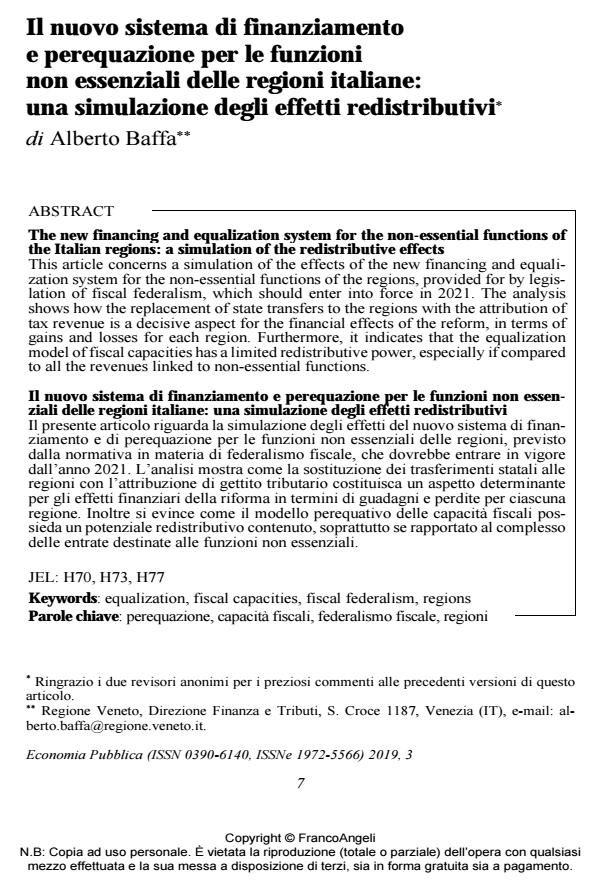The new financing and equalization system for the non-essential functions of the Italian regions: a simulation of the redistributive effects
Journal title ECONOMIA PUBBLICA
Author/s Alberto Baffa
Publishing Year 2020 Issue 2019/3
Language Italian Pages 34 P. 7-40 File size 249 KB
DOI 10.3280/EP2019-003001
DOI is like a bar code for intellectual property: to have more infomation
click here
Below, you can see the article first page
If you want to buy this article in PDF format, you can do it, following the instructions to buy download credits

FrancoAngeli is member of Publishers International Linking Association, Inc (PILA), a not-for-profit association which run the CrossRef service enabling links to and from online scholarly content.
This article concerns a simulation of the effects of the new financing and equalization system for the non-essential functions of the regions, provided for by legislation of fiscal federalism, which should enter into force in 2021. The analysis shows how the replacement of state transfers to the regions with the attribution of tax revenue is a decisive aspect for the financial effects of the reform, in terms of gains and losses for each region. Furthermore, it indicates that the equalization model of fiscal capacities has a limited redistributive power, especially if compared to all the revenues linked to non-essential functions.
Keywords: Equalization, fiscal capacities, fiscal federalism, regions
Jel codes: H70, H73, H77
- Path-dependency and corporate governance in Italy: The political origins of debt financing Antonio Nicita, Riccardo Vannini, in Corporate Ownership and Control /2007 pp.92
DOI: 10.22495/cocv4i4c4p8
Alberto Baffa, Il nuovo sistema di finanziamento e perequazione per le funzioni non essenziali delle regioni italiane: una simulazione degli effetti redistributivi in "ECONOMIA PUBBLICA " 3/2019, pp 7-40, DOI: 10.3280/EP2019-003001